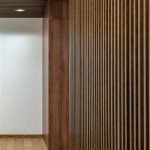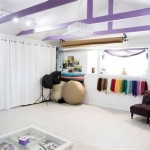Interior Design Courses In Mumbai University With Fees
Mumbai, a vibrant hub of art, culture, and commerce, offers a wide spectrum of opportunities for aspiring interior designers. While Mumbai University itself doesn't directly offer undergraduate or postgraduate degrees specifically labeled "Interior Design," its affiliated institutions and other prominent design schools in the city provide a diverse range of courses covering various aspects of interior design. Understanding the available options, their curriculum structures, and associated fee structures is crucial for prospective students.
Navigating the landscape of interior design education in Mumbai necessitates a nuanced approach. The focus isn't solely on finding a course bearing the Mumbai University name. Rather, it involves evaluating the quality of instruction, the relevance of the curriculum to industry standards, infrastructure, faculty expertise, and placement assistance offered by various institutions situated in and around Mumbai. This article aims to provide a comprehensive overview of the available interior design courses in Mumbai, including information on fees, course content, and key considerations for choosing the right program.
It is important to note that institutions offering interior design courses may be affiliated with, or recognized by, different governing bodies beyond just Mumbai University. These might include autonomous institutions, private universities, or institutions approved by councils related to architecture or design education. Therefore, researching the accreditation and recognition of each institution is essential before enrollment.
Exploring Interior Design Course Options in Mumbai
The courses broadly fall into several categories: degree programs (Bachelor's and Master's degrees), diploma courses (ranging in duration from a few months to a couple of years), and certificate courses (usually shorter, focusing on specific skill sets). Each type caters to different career aspirations and prior academic backgrounds.
Degree Programs: Bachelor of Science (B.Sc.) in Interior Design is a common offering. These programs typically span three years and provide a broad foundation in design principles, space planning, materials, construction techniques, and computer-aided design (CAD). Master's degrees (M.Sc. or similar) are available for those seeking advanced knowledge and specialization. These often delve into research methodologies, sustainable design practices, and project management within the interior design field.
Diploma Programs: Diploma courses are designed to equip students with practical skills and knowledge in a shorter timeframe. They often focus on specific areas such as residential design, commercial design, or furniture design. These programs can be a viable option for individuals seeking a career change or those wanting to acquire specific skills quickly. The duration can vary significantly, depending on the program's depth and breadth.
Certificate Programs: Certificate courses are typically short-term, intensive programs that focus on particular software applications (like AutoCAD, SketchUp, or 3ds Max) or design concepts (like lighting design or color theory). These programs are beneficial for professionals seeking to upgrade their skills or for individuals wanting to explore a specific aspect of interior design before committing to a longer course.
Selecting the appropriate course type depends on individual career goals, educational background, and time commitment. Someone intending to become a licensed interior designer might benefit more from a degree program, while someone seeking to enhance their existing skills might find a diploma or certificate course more suitable.
Understanding Course Curriculum and Key Subjects
The curriculum of an interior design course usually encompasses a blend of theoretical knowledge and practical application. Core subjects typically include:
Design Principles: This involves understanding the fundamental elements of design, such as line, form, shape, color, texture, and space. Students learn how to apply these elements to create aesthetically pleasing and functional interiors.
Space Planning: This focuses on the organization and arrangement of space to meet the needs of the users. Students learn to analyze user requirements, develop functional layouts, and optimize space utilization.
Materials and Construction: This subject covers the properties, applications, and sustainability of various building materials used in interior design. Students learn about construction techniques, building codes, and specifications.
Computer-Aided Design (CAD): Proficiency in CAD software is essential for creating accurate drawings, 3D models, and presentations. Students learn to use programs like AutoCAD, Revit, SketchUp, and 3ds Max.
Lighting Design: This area focuses on the principles of lighting, including natural and artificial light sources, lighting fixtures, and lighting control systems. Students learn to design effective lighting schemes that enhance the ambiance and functionality of interior spaces.
Furniture Design: This involves understanding the history, styles, and construction of furniture. Students learn to design custom furniture pieces or select appropriate furniture for different interior spaces.
Sustainable Design: With growing environmental concerns, sustainable design principles are increasingly integrated into interior design curricula. Students learn about eco-friendly materials, energy-efficient designs, and waste reduction strategies.
Professional Practice: This subject covers the ethical and legal aspects of interior design practice. Students learn about contracts, project management, client communication, and business development.
In addition to these core subjects, courses often include studio projects, site visits, and internships to provide students with hands-on experience and exposure to the industry.
Fee Structure and Financial Considerations
The fees for interior design courses in Mumbai vary significantly depending on the type of program, the reputation of the institution, and the facilities offered. Degree programs typically have higher fees compared to diploma and certificate courses. Institutions with state-of-the-art infrastructure, experienced faculty, and strong industry connections often charge premium fees.
Estimated Fee Ranges:
B.Sc. in Interior Design: The annual fees can range from INR 80,000 to INR 3,00,000 or more, depending on the institution.
Diploma in Interior Design: The total fees for a diploma course can range from INR 50,000 to INR 2,00,000, depending on the duration and specialization.
Certificate Courses: The fees for certificate courses can range from INR 10,000 to INR 50,000, depending on the specific software or design concept covered.
It is crucial to factor in additional expenses such as study materials, software licenses, studio fees, and travel costs when budgeting for an interior design course. Many institutions offer installment payment plans or scholarships to alleviate the financial burden.
Financial Aid and Scholarships: Prospective students should actively explore scholarship opportunities offered by government agencies, private organizations, and the institutions themselves. Many banks also offer educational loans specifically designed for professional courses. Thoroughly researching the available financial aid options can significantly reduce the overall cost of the program.
Before committing to a course, it is advisable to inquire about the exact fee structure, payment deadlines, and refund policies. Understanding the financial implications upfront will help avoid any surprises later on.
Beyond tuition fees, consider the cost of living in Mumbai, which can be significant, especially for students coming from outside the city. Accommodation, food, transportation, and other personal expenses should be factored into the overall budget.
Ultimately, selecting the right interior design course involves a careful evaluation of academic rigor, industry relevance, affordability, and career prospects. Prospective students should research various institutions, compare their offerings, and choose a program that aligns with their individual goals and aspirations. Networking with current students and alumni can provide valuable insights into the learning environment and career opportunities associated with different institutions.

Diploma In Interior Design Mumbai

Pillai College Of Architecture Pica

Design Colleges In Mumbai Intuit Lab

Pillai College Of Architecture Pica

Best Architecture College In Mumbai Tsap

Thakur College Of Architecture And Planning

Interior Design Courses In Pune 2024 Ug Pg Diploma

8 Best Interior Design Colleges In And Academy

Top Architecture College In Mumbai Best Raheja

Welcome To Nagindas Khandwala College
Related Posts








